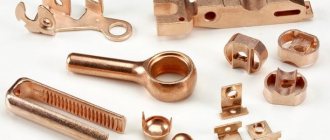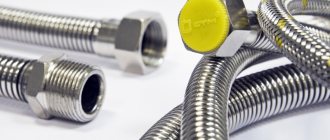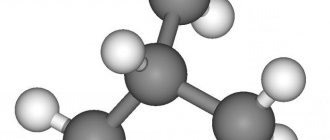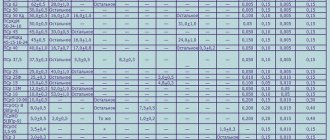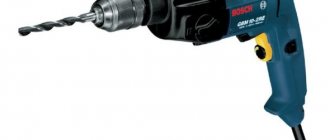The manufacture and repair of jewelry, especially if it is products made of precious metals, has been and remains the prerogative of master jewelers. Repairing gold jewelry is a very responsible procedure, and if the jewelry is also of artistic value, then only a real master should take on the job.
However, you can try to perform certain types of repairs yourself. To perform operations such as gold soldering, you need special tools, materials, and, of course, a certain skill.
Necessary equipment
For those who want to try their hand at this interesting but difficult task, you first need to equip your home workshop with a minimum set of tools, fixtures and materials. For this you will need:
- miniature gas burner with a thin torch;
- special gold solder;
- flux, purchased or homemade;
- miniature pliers and tweezers;
- a set of needle files of different shapes;
- drill;
- small vice.
The process of soldering gold products is no different from soldering other metals. The nuance is that the parts of gold products that need to be soldered to each other are quite small in size.
Another difference is the tools used. A soldering iron is not used for soldering gold, since gold solder has a high melting point. For this reason, the work is carried out with a gas burner.
Handmade jewelry from precious metals and natural minerals
Soldering alloysIn the jewelry industry, solders are distinguished by their metal bases (tin, cadmium, zinc, magnesium, aluminum, copper, silver, gold solders), as well as by melting point (low-melting, medium-melting, refractory). Solders can be made in the form of foil, tape, wire, shavings, mesh, cast rods, shaped castings, etc.
Solders must necessarily have three properties: they wet the base metals well; spreads well, providing high-quality filling of the gap; form strong and durable connections. The choice of the required solder is determined by the properties of the base metal, the operating temperature of the solder, and the soldering method.
Gold solders. Used for soldering gold and platinum jewelry. They are characterized by particularly high corrosion resistance. The gold solder sample must be identical to the product sample. One sample usually corresponds to several solders, which differ from each other in melting point and color. The color of gold solders depends on the ratio of copper and silver in them: more copper - pink solder, more silver - greenish, the same amount of copper and silver - pinkish-yellow. The addition of zinc gives the solder a green color; the addition of cadmium does not change the color of the solder. In practice, a distinction is made between white and yellow gold solders. Yellow solders are used for soldering products made of gold of yellow shades. Products made of white gold and platinum are soldered whole. Based on the amount of copper, zinc, cadmium, and tin contained in solders, they are divided into soft (low-melting) and hard (medium- and high-melting).
Table 3.2 Gold solders of 585 standard used in the domestic jewelry industry
Table 3.3 Gold solders of 750 standard used in the domestic jewelry industry
Table 3.4 Gold solders of 583 standard used at the enterprises of the Ministry of Local Industry
Table 3.5 Gold solders of 750 standard used at the enterprises of the Ministry of Local Industry
In table 3.2 and 3.3 show the brand, composition, type, and operating temperature of gold solders used in the jewelry industry. A number of gold solders of the 583rd and 750th samples (Tables 3.4 and 3.5) are used at the enterprises of the country's Ministry of Mines and Industry.
There are also gold solders of 500 and 375 samples (Table 3.6), which are used when soldering restored and repaired products. And in the table 3.7 and 3.8 give a number of gold solders used by foreign companies.
Table 3.6 Gold solders of 500th and 375th samples
Table 3.7 Recipes for preparing a number of gold solders used abroad
Silver solders. The main distinctive properties of silver solders are ductility, strength, and anti-corrosion. Their melting point is 650-810°C. They provide the required wettability of the joined surfaces of the soldered parts and fill the seam gaps well. Unlike gold, silver solders may not match the purity of the product. Jewelry industry enterprises currently use about a dozen silver solders (Table 3.9). More than two dozen silver solders of various samples (Table 3.10) are used for soldering jewelry at the enterprises of the Ministry of Local Industry. In table 3.11 shows a number of silver solders used abroad.
You can also give the compositions of a number of silver solders used by jewelers of foreign companies: 5-9 parts of pure silver plus 3 parts of brass or 7 parts of pure silver plus 3 parts of copper plus 2 parts of zinc, or 2 parts of pure silver plus 1 part of brass, or 8 parts 800 standard silver plus 1.5 parts of zinc.
Table 3.8 Gold solders used abroad
Table 3.9 Silver solders used in the domestic jewelry industry
Copper-zinc solders. Copper-zinc based solders (Table 3.12) have a satisfactory low melting point, but their ductility is not high enough. These solders are used when soldering copper products that will be subject to impact and bending. Soldering of copper products is also carried out using double brasses L63 and L60. These solders have a higher melting point; their mechanical properties are also higher.
A number of brass solders used by jewelers from foreign companies are prepared in the following compositions: 7 parts brass plus one part zinc, or 5 parts brass plus 2-5 parts zinc, or 3-4 parts brass plus 1 part zinc, or 12 parts brass plus 4 parts zinc plus 1 part tin, or 20 parts brass plus 1 part zinc plus 4 parts tin, or 18 parts brass plus 4 parts zinc plus 1 part pure silver.
Copper-phosphorus solders. This group of solders (Table 3.13) is necessary for soldering jewelry including brass, nickel silver, cupronickel, aluminum bronze and copper-nickel alloys. Their main drawback is poor ductility, to increase which tin and zinc are added to them. Copper-phosphorus solders are prepared in the form of a powdery paste.
Table 3.10 Silver solders used at the enterprises of the Ministry of Local Industry
Table 3.11 Silver solders used abroad
Tin-based solders can have the following composition: 1 part pure tin plus 1 part pure lead, or 2 parts pure tin plus 1 part pure lead, or 5 parts pure tin plus 3 parts pure lead. Paste solders Recently, when soldering mass-produced jewelry, so-called paste solders (solder pastes) based on 583-carat gold alloys have increasingly begun to be used. The application of such solders to soldered products is carried out mechanically using a special dosing device - a dispenser, which increases labor productivity and improves production standards. The use of such solders during the restoration of products makes it possible to easily eliminate defects: cracks, pores, cavities.
Table 3.12 Copper-zinc solders used in the domestic jewelry industry
Table 3.13 Copper-phosphorus solders used in the domestic jewelry industry
Table 3.14 Solders for products made of 56-carat gold
Table 3.15 Solders for products made of 72-carat gold
Table 3.16 Solders for products made of gold 94, 92 and 82 samples
Table 3.17 Solders for silver products
In table 3.14-3.16 show solders for gold products, in table. 3.17 - for silver products, and in table. 3.18 - for products made of steel, copper, brass, aluminum and tin, used by jewelers in pre-revolutionary times.
Solder placement. When applying solder, certain rules must be strictly observed. The pieces of solder should be rectangular in shape; should not be too big or too small. It is necessary to lay the solder not haphazardly, but in a certain sequence and only on one side (Fig. 3.3, c), remembering at the same time that its remnants can be easily removed. Solder should be placed on the inner, reverse sides of the products. The solder is cut with scissors and placed using tweezers. Solder can also be applied using the type of electrode supply, as in welding processes (Fig. 3.3, d). A skilled jeweler strives to solder many seams with the least amount of solder. To obtain high-quality soldered joints and remove all kinds of oxides from the soldering area, various chemicals called fluxes are used.
Table 3.18 Solders for products made of steel, brass, copper, aluminum, tin
Read more about handmade jewelry
All about metals, properties and characteristics
Metal processing
Technologies of artistic metal processing
Solder making
In the absence of special solder for gold, it can be made at home. Additional equipment and materials will be required:
- crucible for melting metals;
- solder components – gold, silver, copper;
- pharmacy scales;
- mold for casting solder.
For soldering gold of the most common 585 standard, the recipe for preparing solder is as follows. For 585 parts of gold, 115 parts of silver and 185 parts of copper are taken.
To this composition should be added either 135 parts of brass or 112 parts of cadmium. The first three base metals are melted together using a gas torch. After they are completely dissolved and mixed, brass or cadmium is introduced into the melt .
Then the finished melt is poured into the mold. It is better to immediately choose the form in the form of a rod. The finished casting is brought closer to the shape of the wire on an anvil or by drawing out a rod.
Solders with precious metals
In jewelry and electronic technologies, there are high demands not only on basic materials, but also on consumables. To improve the quality of the final product, solders with precious metals are used in many areas of production. Gold, silver, platinum and palladium solders are ductile, highly conductive, non-corrosive and heat resistant. Precious metals are rarely used in their pure form; as a rule, they are added to alloys with non-ferrous metals.
Particular attention is paid to solder alloys in jewelry production - they use the same precious metals and the same grade as the base metal. The only exception is for silver products, which can be soldered with silver of a lower standard. Jewelry solders are made from gold, silver and copper and, depending on the composition, are divided into low-melting, medium- and high-melting - zinc and cadmium additives are used to lower the melting point. Soldering with solders that do not contain precious metals can damage the jewelry.
For jewelry solders, not only characteristics are important, but also color - the proportions of metals contained in the solder depend on the color of the main product, since the joints must be not only strong, but also invisible. An increased amount of copper gives a reddish tint, silver - a greenish tint, and an equal amount gives a yellow-pink tint. Complex products made from different types of metal require several solders at once, fortunately there are a huge number of them and you can choose the right one for any need. The simplest jewelry solder is 85% base metal and 15% cadmium.
Technical solders are mainly silver-containing, and platinum and palladium are also used, gold is used less frequently. Only iron and nickel are soldered with pure silver, and also used in the production of contacts, but, as a rule, this metal is included in copper-phosphorus and lead solders. Solder alloys with silver melt well, spread well, withstand vibration and shock loads, conduct heat and electricity, and are resistant to corrosion. Based on their composition, they are divided into double (silver, copper), triple (silver, copper, zinc) and multi-component (silver, copper, zinc, cadmium, tin, nickel, phosphorus, etc.). The latter can solder any hard alloys and steels, but cannot withstand high temperatures during operation. Heat-resistant alloys form silver with manganese, and for exceptional cases, gold, platinum and palladium solders are used.
Gold solders are used not only in jewelry, but also where it is necessary to withstand temperatures of at least 500 ° C - for example, for aircraft and rocket turbines. It forms heat-resistant alloys with silver, palladium, copper and nickel. Iron and cobalt reduce the melting point; chromium, germanium and silicon are used for soldering at elevated temperatures. One of the most common gold solders contains gold (80%) and tin (20%). This alloy has increased thermal conductivity, high strength, resistance to thermal fatigue, tight connections, and tin also replaces lead, which many industries are trying to get rid of. Solder is widely used in medical, aerospace and high frequency applications.
Solders with palladium have recently been increasingly used in electrical and radio engineering and replace alloys of silver with silicon, and also compete with nickel ones. Palladium solders with silver and copper are self-fluxing and are used for soldering high-speed steels, titanium, and chromium-nickel alloys in argon or vacuum. They allow you to solder even thin products, as they remove the oxide film without destroying the metal itself.
Platinum solders contain metals that lower the melting point - the thinner the product, the lower the temperature should be. They are used, as a rule, for joining difficult-to-solder metals and very limitedly due to their high cost.
The circulation of solders containing precious metals is regulated by the Law “On Precious Metals and Precious Stones”, and official suppliers are registered with the Assay Office.
Product preparation
Before jewelry soldering, the product should be secured in a vice or other suitable method. The damaged part of the decoration must be returned to its original shape.
You may have to tinker with this, but this is a mandatory procedure. This may require additional equipment. Selected cylindrical parts will help restore the original shape of a ring or chain link.
Such a part is inserted inside a deformed ring or chain link, after which the product is gently crimped from the outside with pliers until the desired result is achieved. Of course, the chain must be assembled, the damaged link or clasp connected to other links.
After the shape of the product is restored and it is securely fixed, the place of future soldering is cleaned, degreased and covered with a layer of flux. Flux creates a protective film on the surface of gold that prevents oxidation of the metal during the soldering process.
Now you can start the actual soldering. You can buy flux for soldering gold ready-made or make it yourself, taking 10 g of borax and boric acid per 100 g of distilled water.
The solution is boiled, and then the gold item is dipped into it and also boiled for several minutes. As a result, the gold is covered with a protective layer.
Soldering and seam processing
Before starting soldering, you need to adjust the burner flame to the required thickness of the torch. Then uniform heating of gold begins in the joint zone.
It is necessary to accurately determine the moment when solder can be introduced into the joint area. Typically, this phase of soldering is marked by some change in the color of the heated area. The “sense of metal” comes with experience; the first attempts will most likely be unsuccessful.
After heating the product, a solder rod is applied to the joint. The solder must be oriented relative to the burner flame in such a way that the required amount melts.
Excess molten solder will either drain from the product, or after soldering it will have to be removed with a needle file or drill. Do not forget that gold predominates in the composition of solder!
The molten solder should wet the joint and fill the gap at the future seam. The consistency of the melt should be maintained in such a state that it does not flow off the part, being held by surface tension forces.
Heating does not stop until the solder matches the color of the product material. This is a signal that the cadmium contained in it has burned out and the soldering process can be completed.
After the gold has cooled, you can begin its final processing. Larger irregularities are smoothed out with a file; final finishing grinding is best done with a drill with the finest-grained attachment.
If the filler material was chosen correctly and the grinding was done efficiently, the soldering location should not be determined by eye.
The easiest way to prepare gold solder
Preparation of gold solder
In jewelry making, you always have to learn and improve something. Products made from gold and other precious metals that jewelers have to make are not always solid. There are models of jewelry that consist of separate parts. The jeweler makes these parts and then assembles them into one whole composition.
But how to assemble a product from individual parts? Don't glue them together. This is a question many novice jewelers ask. I thought about this too when I started studying this type of activity.
In order to assemble a jewelry composition from individual parts, they must be soldered together using special gold or silver solder. The composition of the solder directly depends on the metal of which the product is made.
There are a very large number of types of solders developed and quite complex in their composition. In this article we will talk about a method for making solder that anyone can easily make in their home jewelry workshop. This type of solder is quite simple and works well.
In practice, this is the only way in which you can prepare both gold solder and copper and silver. These types of solders can be used to solder almost everything, of course, except aluminum and other low-melting metals.
I think that no one will solder steel, bronze, copper or even silver with gold solder, for the simple reason that gold is very expensive. However, if you decide to create a high work of art, a masterpiece of jewelry, so to speak, then the price will not matter at all.
The composition of this solder is quite simple. We take 85% of the base metal and add 15% cadmium to it. There are times when it is necessary to create a composition so that the soldering points where the parts are connected are not visible at all, and the product looks uniform and monolithic. In such situations, solder must be prepared separately for this product.
If the product consists of parts, and each part is made of different alloys, then you will have to prepare solder for each soldering point separately. From metal of the same product so that the color and place of soldering do not differ. Such metal remains during the casting process, in the filled castings of the molds, it should be stored in separate labeled bags in order to later prepare solder from it.
If you decide to create a jewelry composition consisting of parts of different colors or even different metals, then, of course, you should not prepare solder in quantities of more than one gram at a time. Here are instructions for making one gram of good gold solder.
We weigh 0.85 grams of gold and 0.15 grams of cadmium on jewelry scales. Cadmium must be divided into 3-5 parts. We put the gold in a crucible, which we will allocate specifically for this process of alloying gold with cadmium. Then, heating the metal, sprinkle it with borax and melt it until the gold becomes completely liquid and begins to run around the crucible under the pressure of the flame.
Next, using tweezers, add ready-made small pieces of cadmium into the liquid gold, one piece at a time. Cadmium dissolves in gold with a flash and gives the impression that it simply burned and did not get into the alloy. Of course, some part of the cadmium burns, because it has too much of a difference in melting point with gold. As you know, gold melts at 1063 degrees, and cadmium at 321, but the part that dissolves in gold is enough to make excellent solder.
An alloy with cadmium cannot be overheated, since the cadmium will begin to evaporate and the melting point of the alloy will increase. As soon as all the pieces of cadmium have been added, quickly stir the melt with a titanium rod or steel knitting needle and immediately remove the burner flame. After the ingot has hardened, we take it out of the crucible with tweezers and lower it into the water. To remove the remaining borax from the solder, you need to boil it in bleach. That's it, the gold solder is ready to go. Solder for silver and copper can be made in the same way and in the same proportions.
Chain repair
Using the described method, gold rings and chains with fairly large links can be soldered. To solder a gold chain with small links, there is another technology.
Gold sawdust is mixed in castor oil with the addition of phosphorus. In the damaged chain, all bent and torn areas are carefully aligned.
The work must be done with a very thin instrument using a magnifying glass. After this, the damaged section of the chain is moistened with the resulting solution.
As a result of this, tiny gold filings fill the places where the links break. If you now place this section of the chain in the flame of a burner, the gold particles will melt and fill the gaps.
And one last thing. Before starting soldering, especially if it is being done for the first time, you should assess the risks associated with possible damage to gold jewelry . Perhaps in this case it is preferable to use the services of a workshop.

